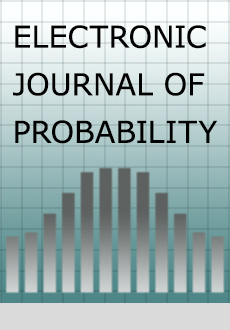Abstract
We introduce a broad class of mechanistic spatial models to describe how spatially heterogeneous populations live, die, and reproduce. Individuals are represented by points of a point measure, whose birth and death rates can depend both on spatial position and local population density, defined at a location to be the convolution of the point measure with a suitable non-negative integrable kernel centred on that location. We pass to three different scaling limits: an interacting superprocess, a nonlocal partial differential equation (PDE), and a classical PDE. The classical PDE is obtained both by a two-step convergence argument, in which we first scale time and population size and pass to the nonlocal PDE, and then scale the kernel that determines local population density; and in the important special case in which the limit is a reaction-diffusion equation, directly by simultaneously scaling the kernel width, timescale and population size in our individual based model.
A novelty of our model is that we explicitly model a juvenile phase. The number of juveniles produced by an individual depends on local population density at the location of the parent; these juvenile offspring are thrown off in a (possibly heterogeneous, anisotropic) Gaussian distribution around the location of the parent; they then reach (instant) maturity with a probability that can depend on the local population density at the location at which they land. Although we only record mature individuals, a trace of this two-step description remains in our population models, resulting in novel limits in which the spatial dynamics are governed by a nonlinear diffusion.
Using a lookdown representation, we are able to retain information about genealogies relating individuals in our population and, in the case of deterministic limiting models, we use this to deduce the backwards in time motion of the ancestral lineage of an individual sampled from the population. We observe that knowing the history of the population density is not enough to determine the motion of ancestral lineages in our model. We also investigate (and contrast) the behaviour of lineages for three different deterministic models of a population expanding its range as a travelling wave: the Fisher-KPP equation, the Allen-Cahn equation, and a porous medium equation with logistic growth.
Acknowledgments
Many thanks to Matthias Birkner, Matthias Winkel, and an anonymous reviewer for detailed comments and corrections. Thanks go to Gilia Patterson for identifying the “clumping” phenomenon, and to Marcin Bownick and David Levin for useful discussions. AME thanks everyone in MAPS at Université Paris Cité for their hospitality during the period in which much of this research took place. AME and PLR also thank the Kavli Institute for Theoretical Physics for their hospitality and birdwatching opportunities; this research was therefore supported in part by the NSF under grant #PHY-1748958 and by the Gordon and Betty Moore Foundation grant #2919.02, both to KITP. PLR was supported by the NIH NHGRI (grant #HG011395), IL by the ANID/Doctorado en el extranjero doctoral scholarship, grant #2018-72190055, and TTHL by the EPSRC Centre for Doctoral Training in Mathematics of Random Systems: Analysis, Modelling and Simulation (EP/S023925/1) the Deutsche Forschungsgemeinschaft under Germany’s Excellence Strategy, EXC-2047/1-390685813, the Rhodes Trust and St. John’s College, Oxford.
Citation
Alison M. Etheridge. Thomas G. Kurtz. Ian Letter. Peter L. Ralph. Terence Tsui Ho Lung. "Looking forwards and backwards: Dynamics and genealogies of locally regulated populations." Electron. J. Probab. 29 1 - 85, 2024. https://doi.org/10.1214/24-EJP1075
Information





